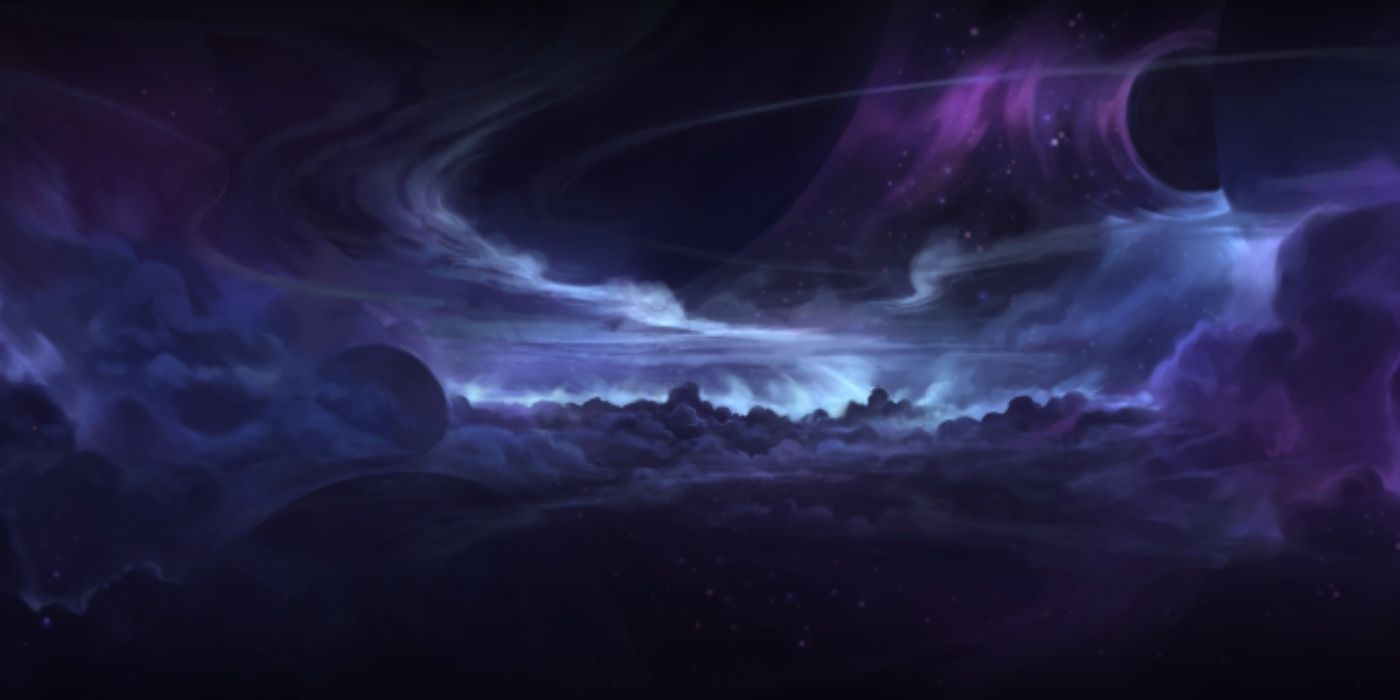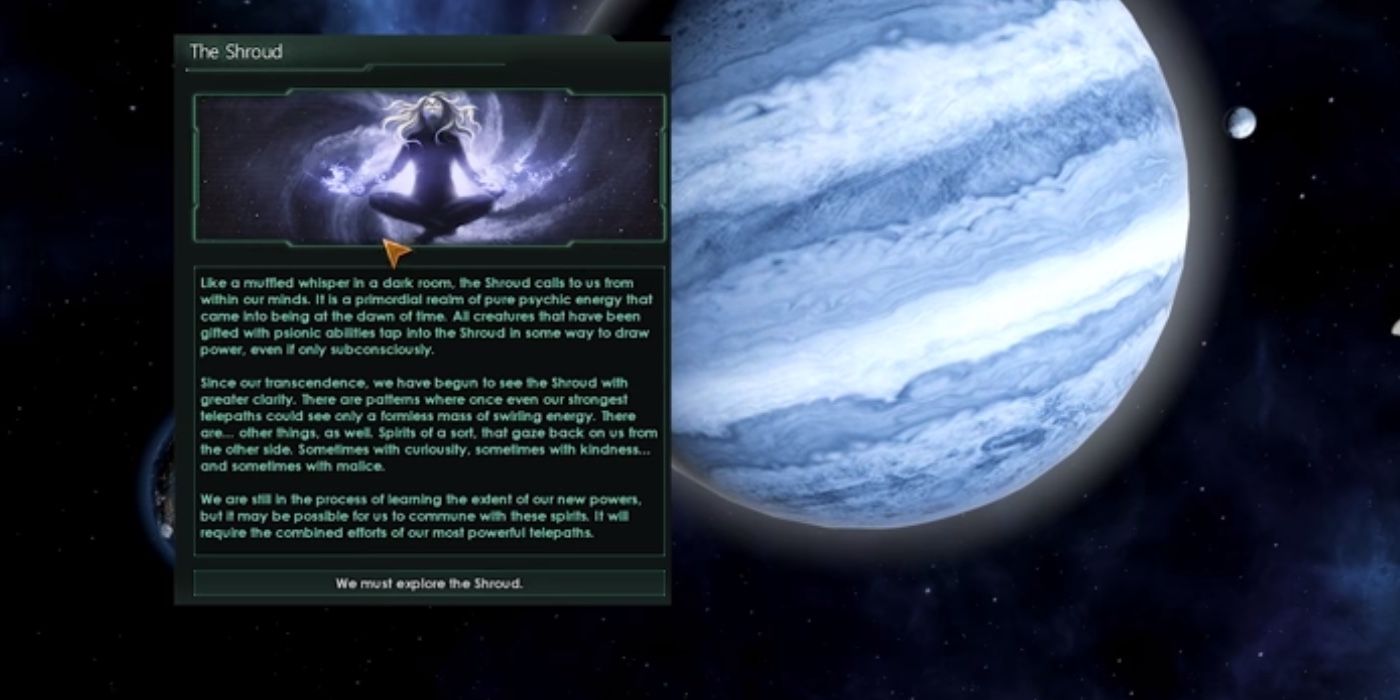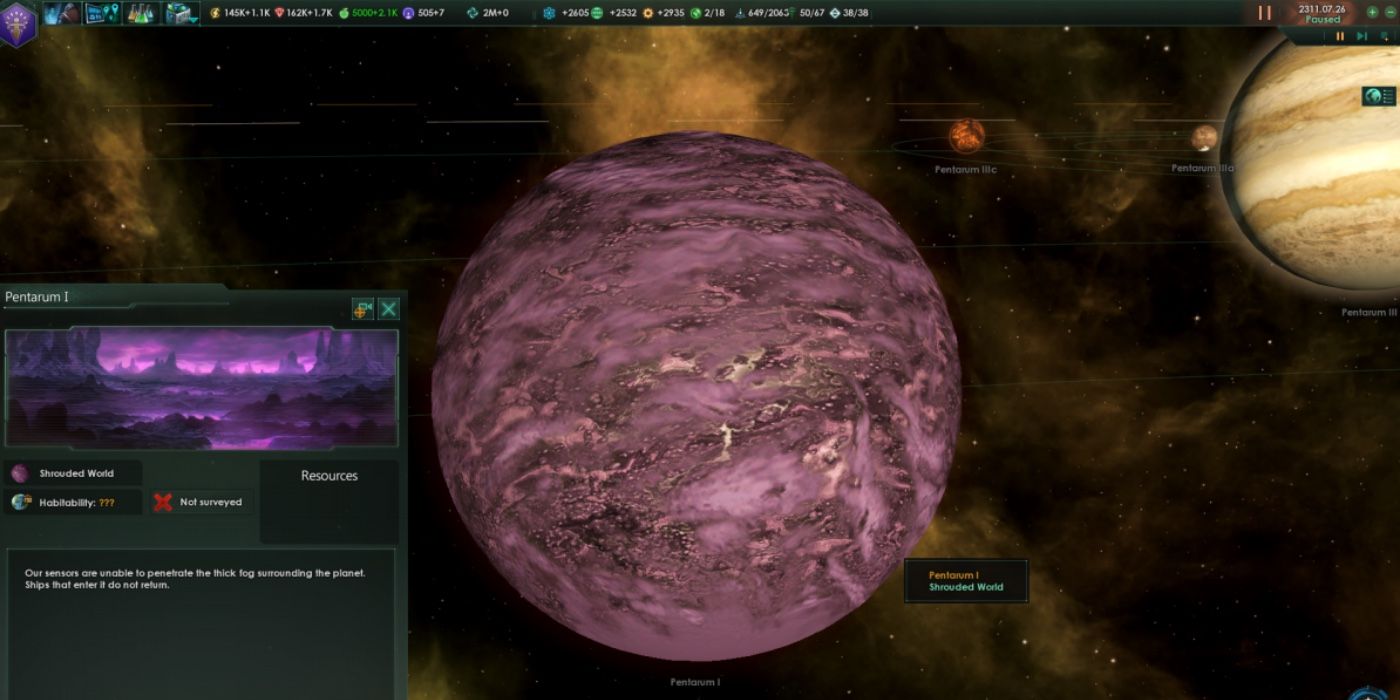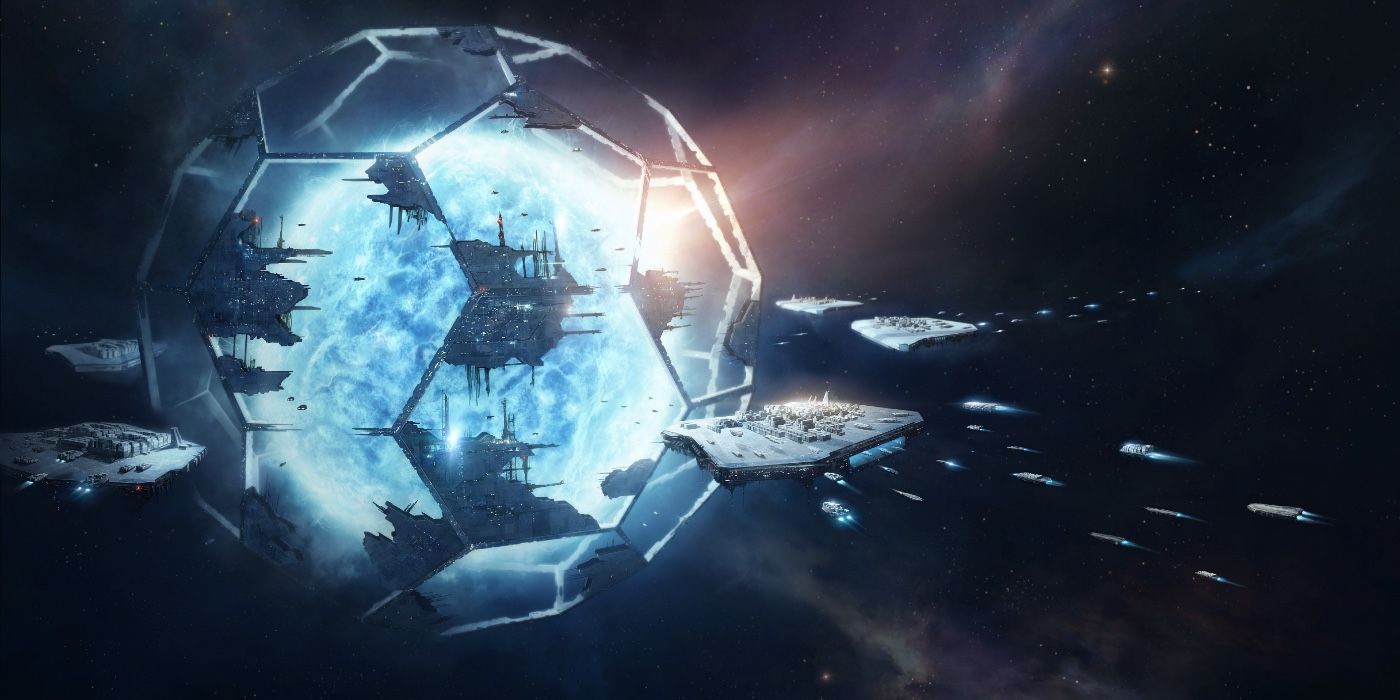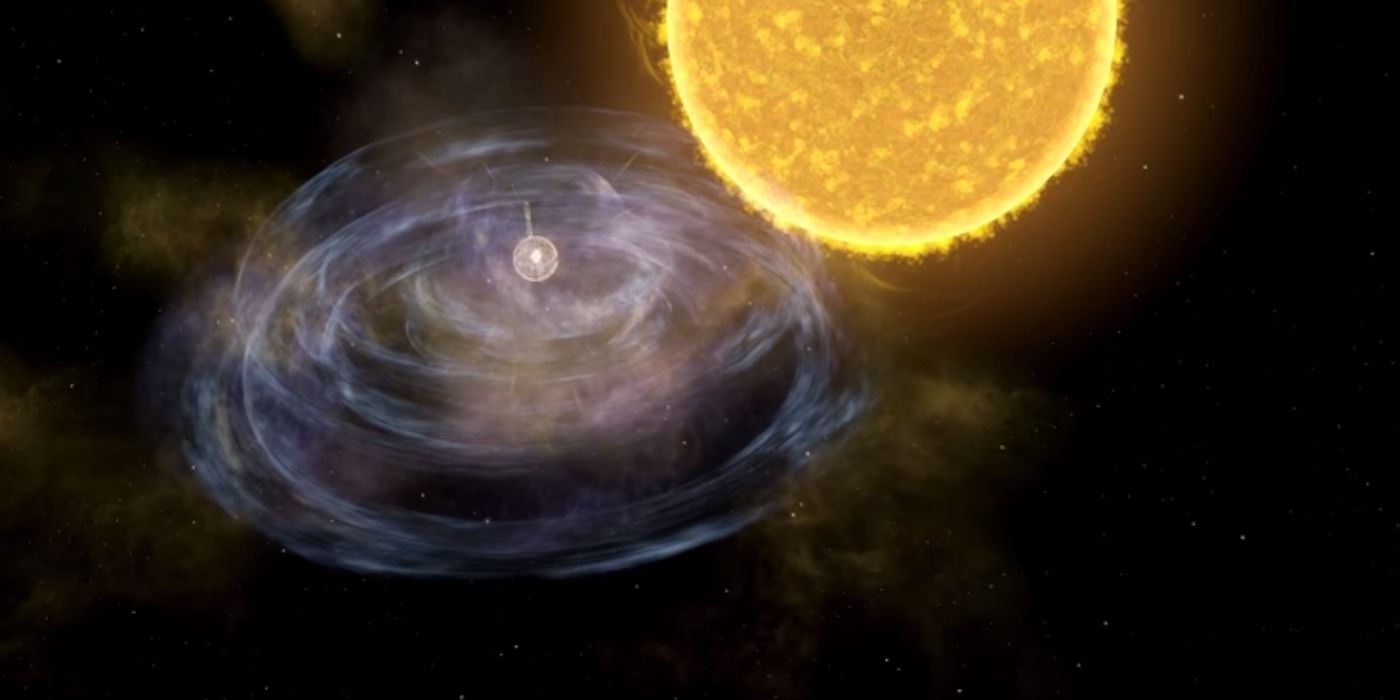Introduced as part of the Utopia DLC for Stellaris, the Ascension Paths give your empire the choice of how to evolve and shape your species’ destiny. One such destiny is to navigate the great and terrible forces of the Shroud, a dark realm/dimension that has existed for billions of years.
The Shroud is the place from where psionic species and individuals draw their power and a place where those who awakened their psionic potential could see in their dreams. The realm is inhabited by powerful beings of pure psionic energy that can be communed with through great effort. This realm was further expanded upon by introducing a new precursor empire in the Ancient Relics DLC, called the Zroni. A psionically adept race, the Zroni were the first to ever contact the Shroud and commune with the entities that exist there. As a cost of one of their deals with these entities, their species and empire was destroyed, with the rare strategic resource known as Zro being their only lasting legacy, a warning for all who would consider dealing with the Shroud.
To access the Shroud, your Empire must first be at least somewhat Spiritual in terms of Ethics. From here, you must then choose the Mind Over Matter Ascension Perk, which will give your Empire the Psionic Ascension Path. Once another slot becomes available, choosing the Transcendence Ascension Perk will make your Empire fully psionic. A few months after picking this perk, you will receive a special project called “Breaching the Shroud.” This project will cost you 20,000 society research points to complete. Once completed, the Shroud will be added to the Contacts menu from where it can be entered, but this can only be done every 5 in-game years and at the cost of 1000 energy credits each time. Acquiring the Psionic Archive Relic can reduce this wait time to 2.5 years, allowing the Shroud to be entered twice as often.
If a leader in your Empire gains the Chosen One trait, then a few years later, an event will trigger where you will gain the option to reform your current Empire into a Divine Empire. Accepting will reform your Empire to have an Imperial Authority, with Ethics shifting towards Authoritarian and Spiritualist, your Civics to have the Imperial Cult, Philosopher King and Aristocratic Elite, as well as the Chosen One Leader to become the new ruler if they aren’t already.
Upon entering the Shroud, the empire will receive a random vision. The outcome of each vision choice is randomized. Each vision also has the option to exit the Shroud if the risk is deemed too great. If deciding it’s worth the risk, the Shroud can be a great way to gain an otherworldly edge against your alien rivals.
Boons and curses are temporary empire modifiers that can be obtained via the Shroud. Being successful will grant a boon, but being unsuccessful will grant a curse. Boons will please the Traditionalist Faction, while curses will be displeased while the modifiers last. There are also 5 powerful god-like beings in the Shroud called Patrons. An empire can form a Covenant with one of them when given the right vision. Forming a covenant usually grants a permanent empire modifier but also comes with recurring drawbacks and prevents you from forming a Covenant with any other.
The “Composer of Strands” provides your Empire with a 20 percent population growth speed as well as an additional 20-year lifespan for all your leaders, with a cost of the psionic species that’s part of your Empire, gaining or losing a random trait. The “Eater of Worlds” provides a 30 percent army morale boost and a 15 percent boost to fire rate but at the cost of sacrificing between just a single pop or as much as an entire colony world in your Empire. The “Instrument of Desire” gives your Empire a 10 percent increase in resources from jobs but at the cost of either a single planet or your entire Empire suffering from heavily reduced governing ethics attraction. The “Whispers of the Void” provides a 15 percent increase to research speed and influence but at the cost of either a psionic leader dying or any of your planets with a psionic population decreasing in stability.
Finally, there is the “End of the Cycle” Covenant, a true deal with the devil by all accounts. The game explicitly warns players not to accept this Covenant for their own good. For those who do accept, your Empire is labeled as “Shroud Marked” and will receive a 100 percent boost to resources and naval capacity, a plus 5 monthly influence boost, and a plus 10 starbase capacity. This Covenant is set to last for 50 in-game years, giving your Empire the tools to conquer all your rivals easily. But once that timer ends, the Reckoning begins.
The Reckoning will all but end your empire that benefited from the Covenant and instantly destroy your vassal empires. When the Reckoning occurs, all Shroud-Marked planets will be depopulated and turned into 'Shrouded Worlds,' which can’t be terraformed and are uninhabitable forever. All fleets and ships under the Shroud-Marked empire's command will be instantly destroyed, all leaders are killed, and all resources from that empire's store will be completely drained. Having lost everything, the Shroud-Marked empire will survive only in the form of a newly colonized planet of survivors, which will start with the default name of 'Exile.' The game will pick any planet with 40% habitability or more, even if it is located within another empire's borders.
The Reckoning is an extremely powerful Shroud entity, representing the combined essence of all deceased psionic pops in the empire that summoned it, appearing over their former homeworld and proceeding to wipe out all remaining life in the galaxy. It normally leaves the Exiles for last, but you’ll likely have to focus on surviving against other empires, especially since regular empires will gain a minus 1000 opinion modifier towards your Exiles for "bringing the end," with a decay rate of 5 each year.
While not an official crisis, it can still occur even if the game doesn't allow an endgame crisis to happen. Due to not being an official crisis, the other empires won't rally to face it, and neither will any Fallen Empire awaken as Guardians. It is the most threatening crisis in the game to date. But while the Exiles have lost everything, they haven't lost their Technologies and Traditions, meaning they can recover, given enough time to rebuild the economy. It's also possible to trade one-time resources and/or diplomatic favors with the AI empires for monthly resources, just before the Reckoning, since trade deals can't be canceled despite the empires’ hatred towards you. All of this gives your empire a real chance of rebuilding in time to fight and destroy the Reckoning, winning the game.

